//ABSTRACT
The aim of the final exercise for Digital Tools for Collaborative Workflows was to develop a collaboration system between all members of the group, tackling the difficulties of working virtually and with different timezones. For that, the development of the project itself had to be set up in a way that all members could easily interchange data, communicate design decisions and cooperate in different parts of the design at the same time effortlessly.
For this we relied on Speckle Systems, a tool that allows for the creation of direct channels of communication between stakeholders. Speckle helped us not only communicating the project directly to other people, but was actually heavily used during the design process, letting us transport geometry and data between members as the project was developed.
// COLLABORATION STRATEGY
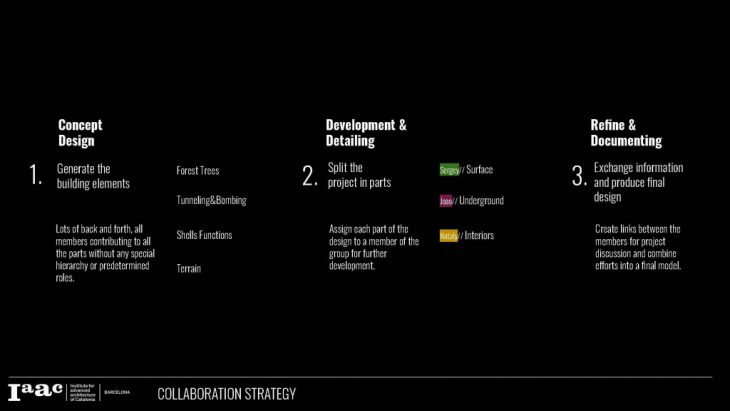
Our strategy was developed with the three main stages of development in mind. Concept Design entailed generating the building elements in a very flexible manner, allowing for constant changes by all members. The Development & Detailling stage was about dividing the project into smaller parts so that they could be assigned to each member for further detailing and development. Finally, Refine & Documenting would be the last stage, from which the final technical drawings would be produced.
// DATA PIPELINE & WORKFLOW
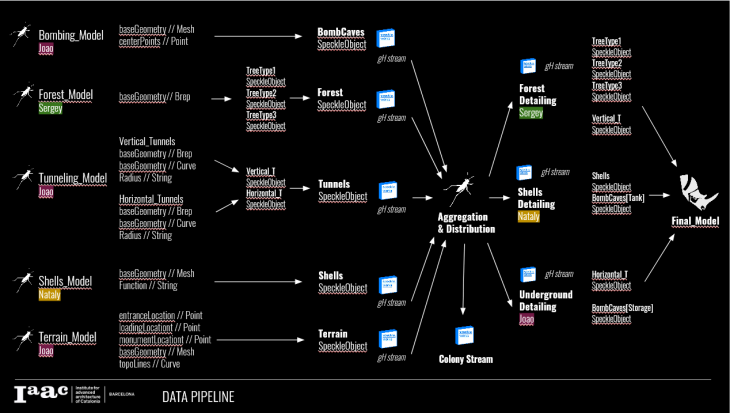
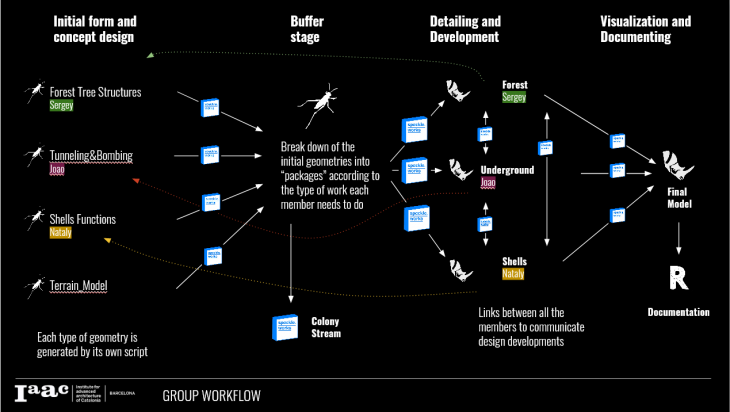
We wanted to work with a collaboration system that was flexible enough to adapt to changes further down the design process and, at the same time, still award individual initiative and agency. This workflow was structured in four steps:
-1. Generating Form – Given the nature of the project, each part of the building was seperated, so that it could be generated by its own script. This seperation allowed for individual streams from individual grasshopper definitions which would not be affected by changes in other definitions.
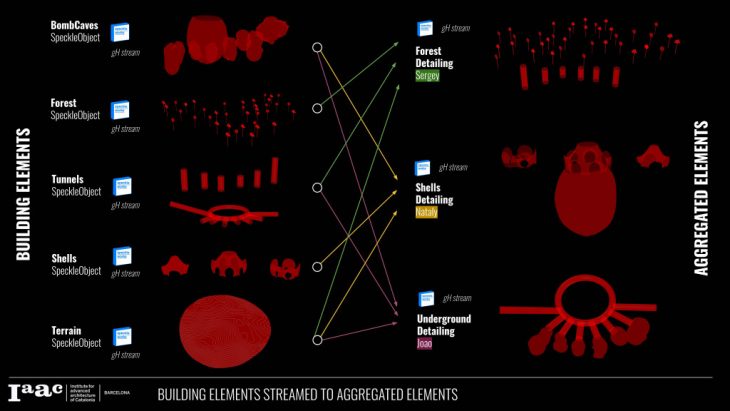
-2. Packaging – All this streams were collected and organized by a buffer stream, where the geometry received would be “packaged” for each group member. This packages consisted of different parts and bits taken from the initial grasshopper definitions and regrouped so that they could be detailed according to the design intent.
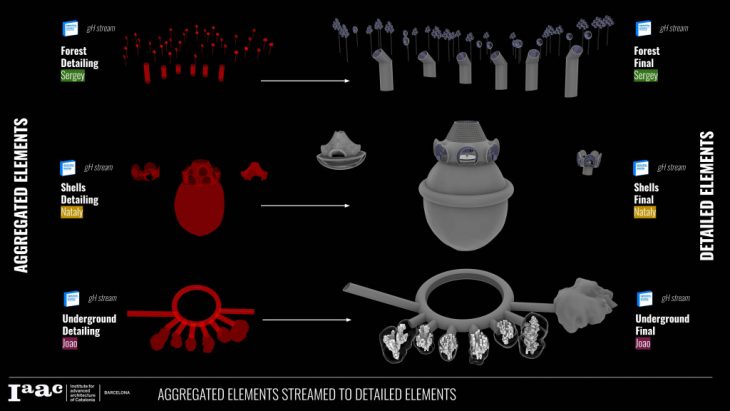
-3. Delievering – Once each member got his “package” of geometry, individual work on detailing could begin. At this stage, direct communication channels were created through Speckle as a way to easily send new ideas and proposals to other members of the group. Finally, the individual geometry was channeled into a final model.
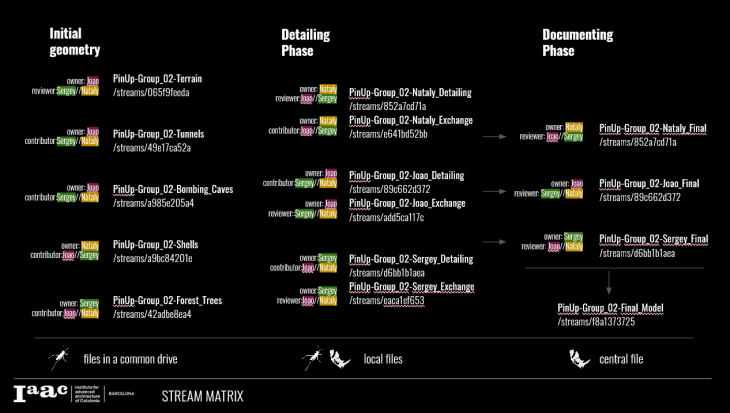
// PARAMETRIC COLLABORATION
The great advantage of using such a system was how easily we could adapt to change. Not just in a parametric way of design, but in a parametric way of collaborating.Usually a change that comes up late in the process of design can very easily become a headache due to the changes that have to be made in different parts of the model. However, with this approach, changing became easy.
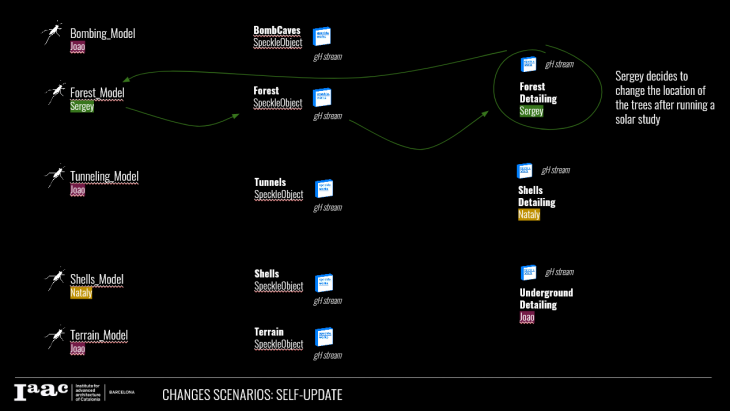
In some cases, a change further down the design process was as simple as running an update in the grasshopper definition that generated the original geometry. Due to the way the packaging was arranged, this could have repercussions only to the detailing phase of one group member.
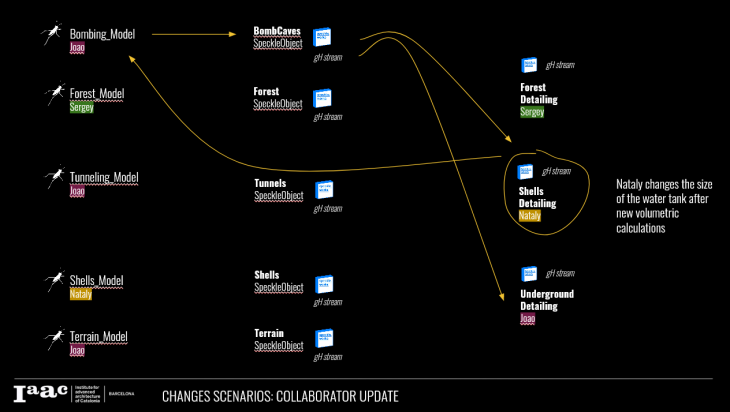
In other cases, the change required more than one member to update the data they were receiving, but the buffer stage of agreggation and distribution introduced earlier made sure this happened in a way that was controlled by each group member.
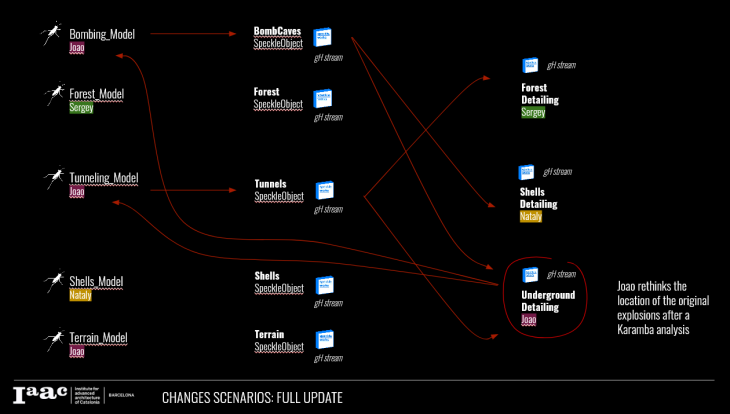
Finally, in some specific cases that tackled more fundamental principles of the design, an overall update was necessary. However, this turned out to be a simple two-step process that envolved all members and made sure no changes were out of individual control.
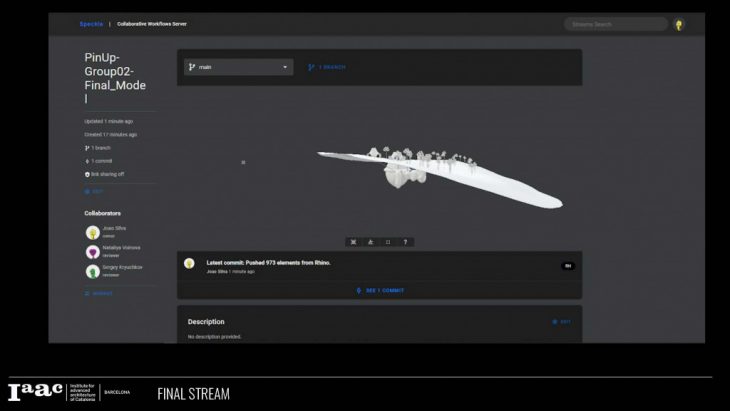
By the end of this process, we had a Speckle stream with the final model, ready to be shared with external stakeholders.
//CREDITS
‘Solar and Water Plant: Collaborative Design Workflow’ is a project of IAAC, Institute for Advanced Architecture of Catalonia developed in the Masters of Advanced Computation for Architecture & Design 2020/21 by Student: Joao Silva, Sergey Kryuchkov, Natalya Voinova and Faculty: Alan Rynne & Noelia Rodriguez